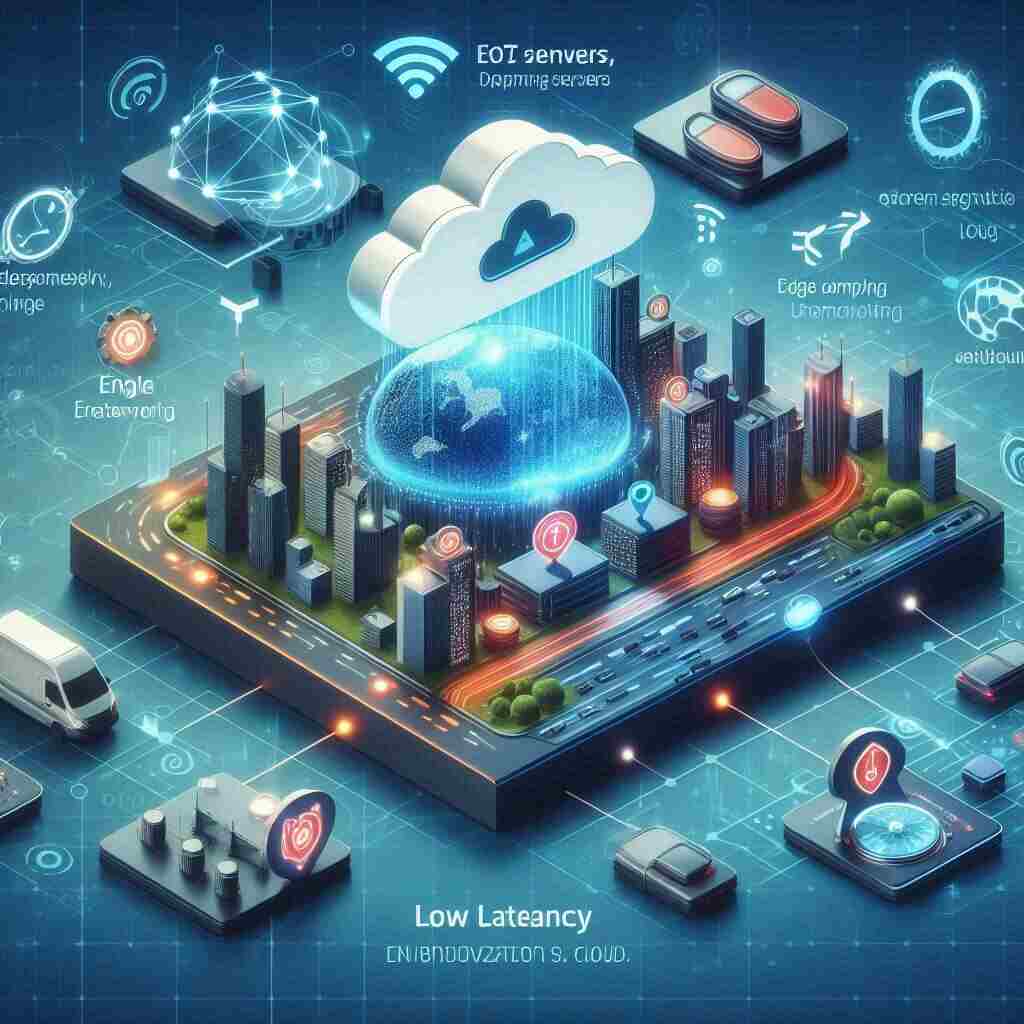
As we step into 2024, the digital landscape continues to evolve at an unprecedented pace, driven largely by advancements in technology. At the forefront of this transformation is cloud computing, a paradigm that has revolutionized how businesses operate and deliver services. At TechRipple, we explore how understanding the scope of cloud computing is essential for organizations aiming to harness its full potential for innovation and efficiency. With cloud computing’s vast capabilities—from enhancing scalability to optimizing cost structures—businesses can stay competitive in a rapidly shifting tech-driven world.
Introduction to Cloud Computing
Cloud computing refers to the delivery of computing services over the internet, enabling users to access resources such as servers, storage, databases, networking, software, and analytics without direct management by users. This model offers significant advantages, including cost savings, scalability, and flexibility.
The scope of cloud computing encompasses various service models:
- Infrastructure as a Service (IaaS): Provides virtualized computing resources over the internet.
- Platform as a Service (PaaS) provides hardware and software tools via the internet, primarily for application development.
- Software as a Service (SaaS): Delivers software applications over the internet on a subscription basis.
These models illustrate how diverse and expansive the scope of cloud computing can be.
What is the Scope of Cloud Computing?
The scope of cloud computing extends beyond mere data storage or application hosting; it represents a fundamental shift in how organizations approach IT infrastructure and service delivery. Here are some key aspects that define this scope:
- Accessibility: Cloud services can be accessed from anywhere with an internet connection, allowing for remote work and collaboration.
- Cost Efficiency: Organizations can reduce capital expenditures by utilizing pay-as-you-go models instead of investing heavily in physical infrastructure.
- Scalability: Businesses may quickly adjust their resources based on demand, ensuring they only pay for what they use.
- Innovation Enablement: The cloud provides a platform for rapid development and deployment of new applications and services.
Understanding these elements helps clarify what is included in the scope of cloud computing.
Key Drivers of Cloud Adoption
Several factors are driving organizations to adopt cloud computing solutions:
- Digital Transformation: As businesses seek to modernize their operations, cloud technology plays a crucial role in facilitating this transformation.
- Increased Data Generation: The explosion of data generated by IoT devices necessitates scalable storage solutions that cloud computing provides.
- Remote Work Trends: The rise in remote work has accelerated demand for cloud-based collaboration tools and services.
- Cost Management: Organizations are continually looking for ways to optimize costs without sacrificing performance, making cloud solutions appealing.
These drivers significantly influence the expanding scope of cloud computing, making it an essential consideration for businesses today.
Current Trends Influencing the Scope of Cloud Computing
As we explore the current landscape, several trends are shaping the future scope of cloud computing:
Hybrid and Multi-Cloud Strategies
Hybrid clouds combine public and private clouds to create a unified infrastructure that allows organizations to manage their data more effectively while maintaining control over sensitive information. Multi-cloud strategies involve using multiple cloud service providers to avoid vendor lock-in and enhance flexibility.

This trend reflects a growing recognition that a single-cloud approach may not meet all business needs, thus broadening the overall scope of cloud computing.
The Rise of Edge Computing
Edge computing processes data closer to its source rather than relying solely on centralized data centers. This approach reduces latency and improves real-time data processing capabilities, which is particularly beneficial for industries such as manufacturing, healthcare, and transportation.

The integration of edge computing into existing cloud architectures further enhances the overall scope of cloud computing, enabling new use cases that require immediate insights from connected devices.
Artificial Intelligence and Machine Learning Integration
AI and ML are becoming integral components within cloud platforms. By leveraging these technologies, organizations can analyze vast datasets more effectively, automate decision-making processes, and gain valuable insights into customer behavior.

The integration of AI into cloud services not only enhances operational efficiency but also expands the potential applications within the scope of cloud computing.
Serverless Architectures
Serverless computing allows developers to build applications without managing server infrastructure. This model enables organizations to focus on writing code while automatically scaling resources based on demand.

This trend adds another layer to the expanding scope of cloud computing, providing businesses with cost-effective solutions for application development while reducing time-to-market for new products.
Future Scope of Cloud Computing
Looking ahead to 2024 and beyond, several predictions can be made regarding the future scope of cloud computing:
Increased Adoption Across Industries
As more industries recognize the benefits of cloud technology—such as improved efficiency, cost savings, and enhanced collaboration—the adoption rate will continue to rise across sectors like healthcare, finance, retail, education, and government.
Enhanced Security Measures
With growing concerns about data breaches and cyber threats, organizations will prioritize security in their cloud strategies. We can expect advancements in encryption technologies, identity management solutions, and compliance frameworks that will enhance trust in cloud services.
Greater Focus on Sustainability
As environmental concerns become increasingly prominent, organizations will seek sustainable practices in their IT operations. The future scope of cloud computing will likely include green initiatives aimed at reducing carbon footprints through energy-efficient data centers and optimized resource usage.
Expansion into Emerging Markets
Emerging markets are beginning to adopt cloud technologies at an accelerated pace due to increased internet penetration rates and mobile device usage. This expansion will broaden the global reach and impact within the overall scope of cloud computing.
Industry-Specific Applications of Cloud Computing
The versatility of cloud computing allows it to cater to various industries uniquely:
Healthcare
In healthcare, the scope of cloud computing includes electronic health records (EHR), telemedicine platforms, patient management systems, and data analytics tools that help improve patient outcomes while ensuring compliance with regulations like HIPAA.
Finance
Financial institutions leverage cloud technologies for risk management solutions, fraud detection systems, regulatory compliance tracking tools, customer relationship management (CRM) systems, and trading platforms—each contributing significantly to enhancing operational efficiency within this sector’s unique context.
Retail
Retailers utilize cloud platforms for inventory management systems that track stock levels across multiple locations; e-commerce platforms that provide seamless shopping experiences; customer engagement tools powered by AI analytics; supply chain optimization solutions; among others—all illustrating how diverse applications fall under what is included within the scope of cloud computing in retail settings.
Challenges Impacting the Scope of Cloud Computing
Despite its numerous advantages, several challenges must be addressed as organizations embrace this technology:
Data Security Concerns
As more sensitive information is stored in clouds—ranging from personal customer data to proprietary business information—ensuring robust security measures becomes paramount.

Organizations must invest heavily in cybersecurity protocols while continuously monitoring threats through advanced technologies like AI-driven security systems designed specifically for protecting against breaches or attacks targeting their infrastructures hosted remotely.
Compliance Issues
Organizations must navigate complex regulatory landscapes when storing sensitive information in clouds—especially those operating across multiple jurisdictions where regulations may differ significantly regarding privacy rights or data handling practices—making compliance management an essential aspect influencing decisions surrounding what is included within any given organization’s overall strategy regarding utilizing available options falling under today’s evolving understanding concerning overall “scope” associated with “cloud” technologies available today!
Vendor Lock-In Risks
Relying heavily on a single cloud provider can limit an organization’s flexibility over time, as it locks them into a specific vendor’s ecosystem. This vendor lock-in can increase costs significantly if there is a need to switch providers later, particularly if business requirements change unexpectedly. As a result, many organizations are now adopting multi-cloud strategies, which involve using multiple cloud service providers to reduce risk, enhance flexibility, and optimize costs.

This approach allows companies to leverage the best features from various platforms while avoiding over-reliance on any single provider. When defining long-term goals, organizations must carefully assess the scope of cloud computing in terms of acceptable risk versus reward. By understanding the broader implications of cloud technologies, businesses can make informed decisions that align with their evolving needs. The scope of cloud computing extends beyond mere infrastructure; it includes innovations in software, security, and scalability, which are critical to meeting future business demands efficiently.
Conclusion
As we look toward 2024—and beyond—it is clear that understanding both current trends impacting today’s rapidly evolving landscape alongside anticipated shifts occurring down-the-line will prove critical when considering how best position oneself strategically moving forward within this dynamic environment characterized largely defined by ongoing developments surrounding “cloud” technologies available today!
The future scope of cloud computing remains vast & promising; embracing these trends will enhance operational efficiency while unlocking new opportunities for growth within increasingly digital worlds characterized largely shaped directly tied back into ongoing developments surrounding “cloud” technologies available today!
In conclusion—by recognizing what constitutes acceptable risk versus reward associated directly tied back into understanding broader implications surrounding overall “scope” related specifically tied back into “cloud” technologies available today—organizations can effectively navigate challenges posed while maximizing investments made towards achieving desired outcomes ultimately leading towards success moving forward!





